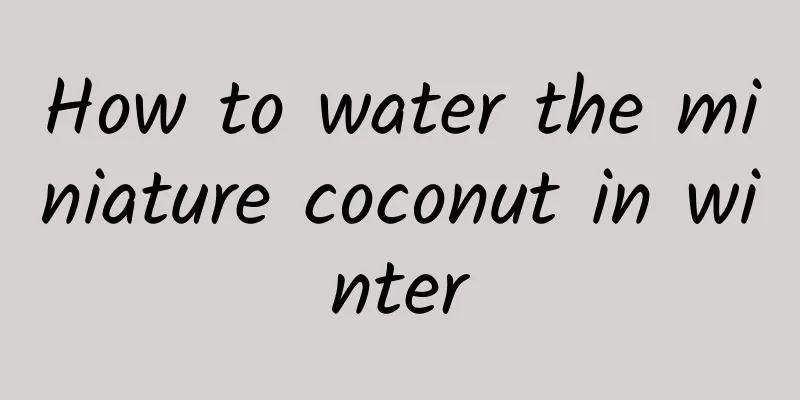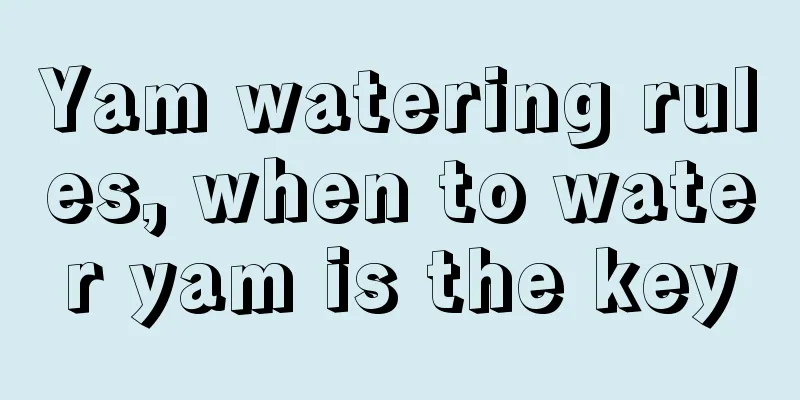How to manage mealworms in winter?

|
Mealworms , also known as mealworms, are suitable for breeding in many places. They can not only be used as feed for some poultry and livestock, but also be eaten by people. They have high nutritional value. Now that we have entered winter, how should mealworms be managed in winter? Let’s take a look below. 1. How to manage mealworms in winter? 1. Insulation measures: The temperature is low in winter. Although mealworms can withstand temperatures as low as minus 2 degrees Celsius, their larvae cannot adapt to such low temperatures. Long-term low temperatures will cause mealworms to freeze to death. Therefore, insulation measures need to be taken. You can use a coal stove or heater to increase the temperature in the breeding room. Generally, the temperature of adults and pupae should be slightly higher, while the larvae can generate heat through friction and the temperature can be slightly lower. Special attention should be paid to keeping warm at night. The day and night temperature should be kept above 10 degrees, otherwise it will affect the growth rate of mealworms and increase breeding costs. 2. Sealing work: In order to maintain the temperature of the breeding room, sealing work needs to be done well. You can use plastic sheeting to seal doors and windows, and hang curtains to prevent cold wind from entering. The door can be covered with a cotton curtain to reduce the heat taken away by people entering and exiting. If multiple houses are connected, cotton curtains can be used to block the gaps between rooms. If necessary, two doors can be set up to reduce the direct entry of cold air into the room. 3. Ventilation: When using a coal stove or heater, be careful to prevent gas poisoning. You can open a small hole in the window for short-term ventilation to maintain air circulation and avoid high carbon dioxide concentration leading to hypoxia and poisoning. 2. The breeding environment of mealworms Worm boxes: Worm boxes for breeding mealworms are generally made of wooden boards, and the inner surface of the box needs to be coated with a layer of paint or plastic film to prevent the mealworms from crawling out. Feed: The feed for mealworms mainly includes wheat bran , corn flour, rapeseed cake, etc., which are mixed in a certain proportion. Temperature: The suitable growth temperature for mealworms is 10℃-30℃. Insulation measures need to be taken in winter, and ventilation and cooling should be paid attention to in summer. Humidity: The relative humidity of the mealworm breeding environment should be 60%-70%. Too dry or too wet may cause the mealworm to die. 3. Feeding and management of mealworms Egg hatching: Place the eggs in a worm box and maintain suitable temperature and humidity. It usually takes 7-10 days for mealworms to hatch. Larvae management: During the mealworm larvae period, it is necessary to keep sufficient feed in the worm box and regularly clean up waste such as feces to prevent the occurrence of diseases and pests. Adult breeding: When mealworms grow to the adult stage, they need to be moved to a special adult box for breeding. Egg-laying paper or egg-laying net should be set in the adult box to facilitate the adult insects to lay eggs. Egg collection and hatching: Collect eggs at regular intervals and hatch them together to obtain more mealworms. 4. Precautions for mealworms Pest and disease prevention: During the mealworm breeding process, the insect condition needs to be checked regularly, and if pests and diseases are found, preventive measures should be taken in time. Prevent overlapping stacking: Mealworms need to maintain a certain amount of space during their growth process to avoid overlapping stacking, which will affect their growth. Pay attention to hygiene: The place where mealworms are raised must be kept clean and hygienic, and cleaned and disinfected regularly to prevent bacterial and viral contamination. Moderate feed: The feed for mealworms should be moderate to avoid excessive or insufficient feed, which will affect their normal growth. The above are the breeding methods and precautions for mealworms. From the above content, we can conclude that in order to raise mealworms well, we need to provide them with a suitable growth environment, reasonable feed formulation, and meticulous feeding management.
|
<<: How to water orchids in winter?
>>: The correct way to water succulents in winter
Recommend
How to maintain champagne roses
1. Use water rationally Normally, if we use water...
The difference between lantern fruit and girl fruit
1. Differences in morphology The lantern fruit is...
How to grow the purslane tree so that it blooms
1. Adequate sunlight It likes light, so when cari...
How to cultivate cymbidium to grow well
Cymbidium Orchid Growth Conditions The suitable g...
What to do if the leaves of Haworthia stripeda turn yellow
Reasonable watering Haworthia does not like water...
Tips for growing indoor flowers in winter
Temperature Control In winter, even in a warm roo...
The efficacy and function of basil
one. value 1. It can treat urinary problems. Diff...
What kind of water is good for money tree
1. Tap water The money number has no special requ...
When should okra be sown? What are the precautions after sowing?
1. Sowing time Okra prefers a warm growing enviro...
What is the function of lotus bamboo
Home Decor The leaves of Lotus Bamboo are emerald...
When is the best time to sow watermelon?
Suitable time for watermelon planting Watermelon ...
This flower will bloom into a waterfall when hung on the wall. If you pick the right time to soak it in water, it will not get sick all year round!
Dendrobium varieties 1. Dendrobium candidum When ...
How many years does it take for Custard Apple to bear fruit?
Custard apple planting results after several year...
How to grow potted Impatiens in winter? Can it survive in winter?
1. How to grow potted Impatiens in winter 1. Cont...
Should I use a large or small pot for Monstera?
Should I use a large or small pot for Monstera? M...









